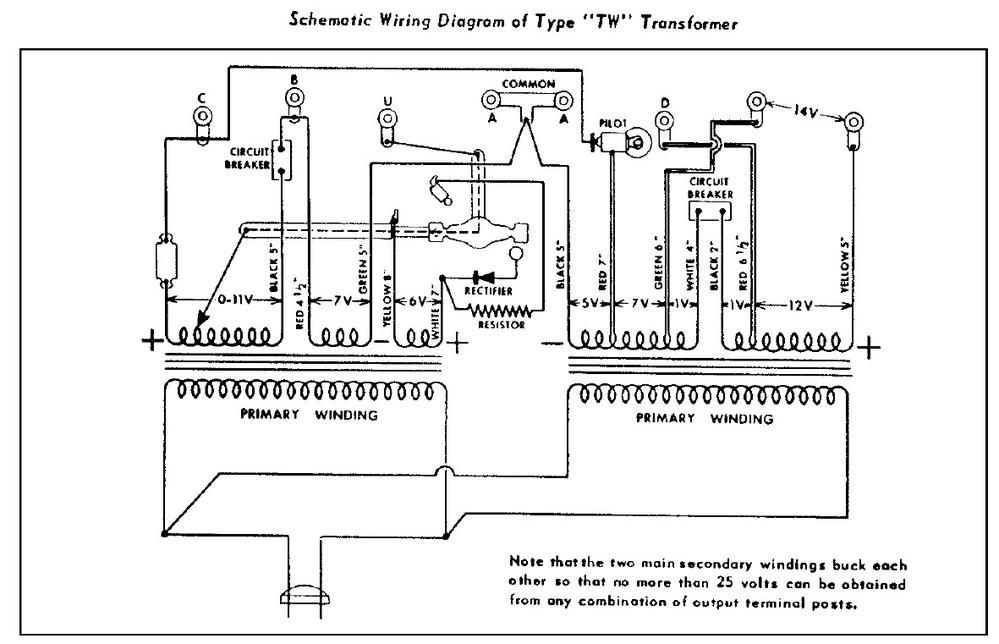Lionel is a company that makes model railroad sets and parts. I have some of their "O-gauge" products and want to learn more about how the transformers work.
Above is a schematic of the transformer by a train enthusiast. No schematics are available from Lionel.
The transformers are actually 'controllers', as they do more than just transform the voltage. They also provide three different "activation" buttons:
1) Direction - a button press switches the locomotive's direction with each button press, Forward to Neutral to Reverse to Neutral to Reverse, etc.
2) Bell - a button press turns the bell sound ON. A second press turns the bell OFF. This happens because a button press "adds DC current to the output" which "changes the shape of the AC sine wave". (from sine wave shape to 'shark-fin' shape)
3) Whistle - momentary switch that makes the whistle sound while the button is pressed down. This also happens because a button press "adds DC current to the output" which "changes the shape of the AC sine wave". But this sine wave mod is different from button (2)s sine wave change.
I am not interested in the electronic function of the (1) direction control. The direction is also controlled by reducing voltage to 0 via the voltage control handle. The button seems to be redundant control of voltage supply, and it's probably just a momentary kill switch. In any event, that's not what I'm keen to learn about.
What I am really curious about is what the other buttons do electronically and electrically.
I already know that pressing either (2) or (3) adds DC current to an AC signal. Or at least that's what I think I know from what I can Google about it. And that DC current overlaid on the AC current is what distorts the AC sine wave.
It is somehow the shape of the sine wave that activates the sounds, or DC on the tracks that activates the sounds, or some combination of the two. I have read much that is unclear or seems contradictory out in Google-land.
I also have read that when the sound control buttons are pressed, the 18v AC gets some 'boost' somehow to allow for consistent delivery of power to the locomotive's motor (thus not causing the locomotive to slow down every time you sound the whistle).
But I don't really understand what's happening here... It's all done via a processor on a chip on the circuit board inside the transformer and I am WAY past my limits of comprehension.
So...
Can someone please give me a step-by-step explanation of what actually happens as you press (2) or (3)?
An explanation comprehendible by someone with only very limited knowledge of electronics?
Thanks.



